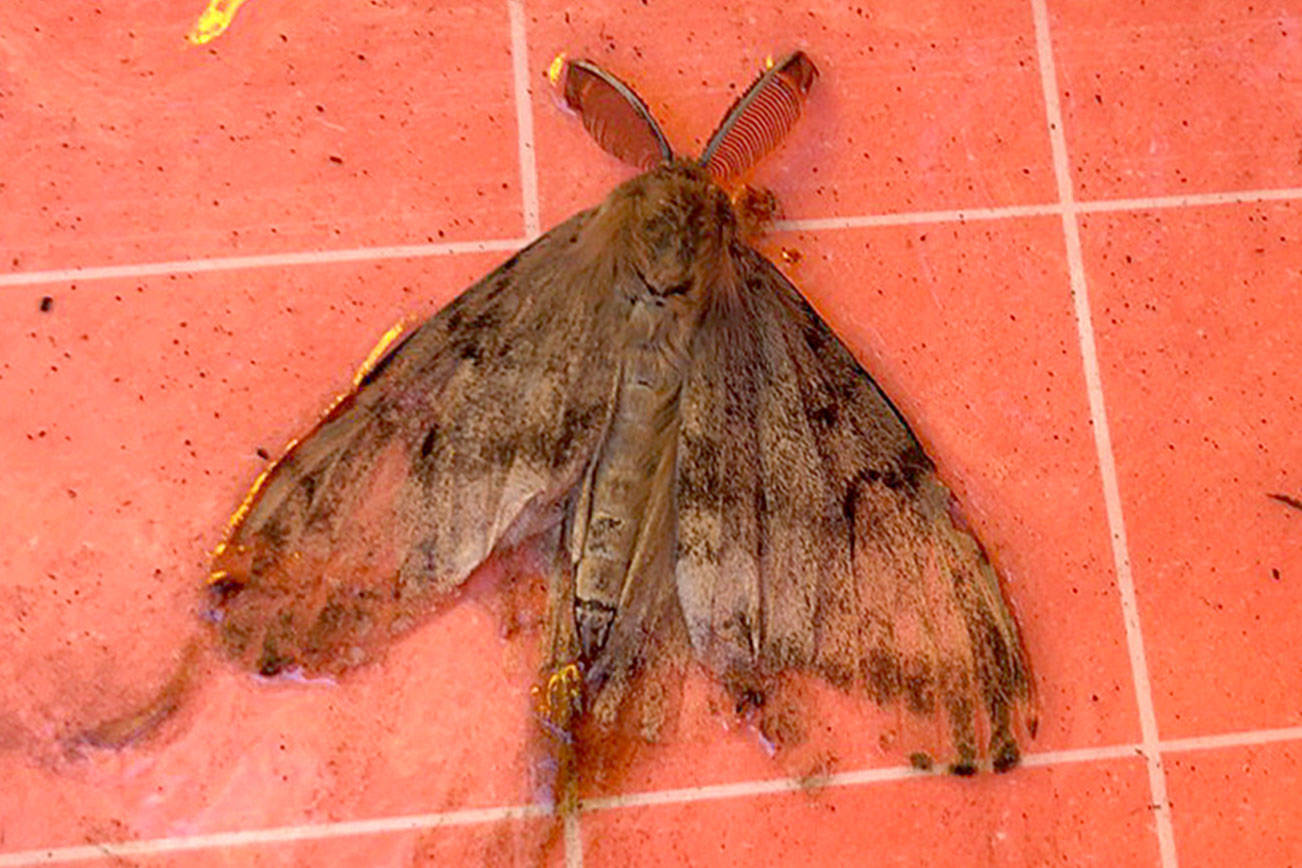WOODWAY — He’s reportedly the first Hokkaido gypsy moth ever found in the United States, but he’s not welcome.
The invasive insect whose natural range includes Japan, Russia and the Kuril Islands turned up in Woodway July 25.
He looks a lot like his relatives, the perennial pest European and Asian gypsy moths that can cause massive destruction to plants and trees if not kept in check. It took DNA tests at labs in Tumwater and Massachusetts to confirm that the moth found in Woodway was the Hokkaido variety.
“It’s a surprise and very interesting for our entomologists and other entomologists around the country,” said Karla Salp, a spokeswoman for the state Department of Agriculture.
“It is a concern in the sense that it’s a variety of Asian gypsy moth,” she said.
The Hokkaido moth has caused extensive damage to Japanese Larch, but feeds on many types of trees and shrubs that can be found in the Pacific Northwest, according to Sven-Erik Spichiger, managing entomologist for the state Department of Agriculture’s plant protection division.
Like the Asian gypsy moth, the Hokkaido moth most likely stowed away on a bulk cargo ship from an infested area across the Pacific Ocean. European gypsy moths are well established on the East Coast. Often, their eggs are left on household articles, such as patio furniture and children’s toys, that sometimes are taken across country.
Either way, the gypsy moth is considered the worst forest pest insect ever to find its way into the country, according to the Department of Agriculture. It has defoliated millions of acres of trees and shrubs since arriving in the United States in 1869 when a naturalist brought over a bunch of its eggs to cross breed with silk worms.
The problem was, some of those gypsy moths managed to escape. More than 150 years later, 20 Eastern and Midwestern states have permanent infestations of the European gypsy moth. In 2015, the damage was so bad in Rhode Island that it could be seen from space, according to news reports. A year later, a third of the state of Massachusetts was defoliated by gypsy moths.
The gypsy moth was first detected in Washington state in 1974. Since then, a few have have been trapped almost every year, but a permanent population has not been established.
Part of the prevention strategy can be found on trees in area neighborhoods each summer in the form of small green and orange cardboard boxes. They serve as traps baited with an artificial lure that mimics the scent of a female gypsy. Once the male lands inside the trap, it sticks to the surface, which is covered in a glue-like substance.
In recent years, the moths have been trapped locally in Snohomish, Mukilteo, Camano Island, Oak Harbor and Martha Lake. The one trapped near Martha Lake was an Asian gypsy moth and resulted in aerial spraying over about 700 acres in May.
There’s more urgency to dealing with the Asian gypsy moths fast, Salp said.
Unlike the European gypsy moth, the Asian females can fly, which can quickly spread the potential for damage.
“And they more readily eat evergreens,” Salp said.
Eric Stevick: 425-339-3446; stevick@heraldnet.com







